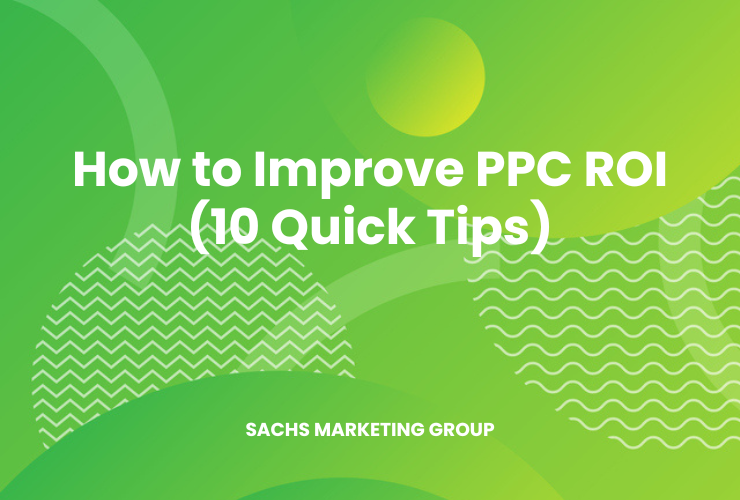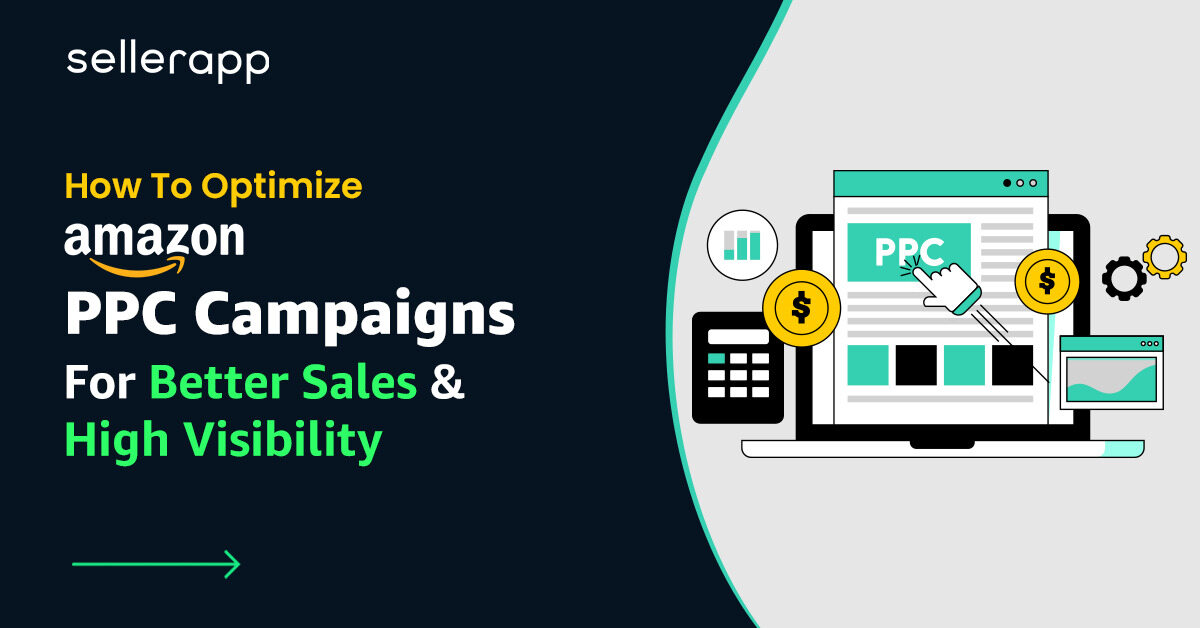To achieve success in Pay-Per-Click (PPC) management, using relevant keywords, compelling ad copies, and optimizing landing pages are proven strategies. Implementing a well-structured campaign, conducting thorough keyword research, and continuously analyzing and refining ad performance are essential for effective PPC management.
PPC management strategies play a critical role in maximizing the return on investment (ROI) and driving targeted traffic to your website. Effective PPC management is crucial for businesses seeking to increase their online visibility and generate qualified leads. By leveraging tailored PPC strategies, businesses can enhance their online presence, establish brand authority, and drive valuable traffic to their website.
With the right approach, businesses can capitalize on the power of PPC to achieve their marketing goals and outperform competitors in the digital landscape. Now, let’s explore the key elements of successful PPC management strategies and how they can significantly impact your business’s online performance.

Credit: www.simpletiger.com
1. Crafting Effective Ppc Campaigns
Crafting effective PPC campaigns is essential for driving relevant traffic to your website and maximizing your return on investment. By implementing proven pay-per-click management strategies, you can leverage the power of keyword research, ad copywriting, and landing page optimization to create compelling campaigns that resonate with your target audience.
1.1 Keyword Research
Keyword research is the cornerstone of any successful PPC campaign. Identifying relevant keywords that align with your target audience’s search intent is crucial for driving qualified traffic to your website. By conducting thorough keyword research, you can uncover valuable insights into the terms and phrases potential customers are using to find products or services similar to yours. This data can inform your ad targeting and bidding strategies, ensuring that your campaigns reach the right audience at the right time.
1.2 Ad Copywriting
Compelling ad copy is the key to capturing the attention of potential customers and driving clicks. Crafting engaging and persuasive ad copy that highlights the unique selling propositions of your products or services can significantly impact the performance of your PPC campaigns. By creating attention-grabbing headlines, compelling calls-to-action, and relevant ad content, you can increase the likelihood of attracting clicks and converting visitors into customers.
1.3 Landing Page Optimization
Landing page optimization plays a crucial role in ensuring a seamless user experience and maximizing the conversion potential of your PPC traffic. By aligning your landing page content with the messaging and intent of your ads, you can create a cohesive user journey that guides visitors towards taking the desired action, such as making a purchase or submitting a lead form. Factors such as clear and compelling value propositions, intuitive navigation, and optimized forms can contribute to higher conversion rates and ultimately drive the success of your PPC campaigns.

Credit: sachsmarketinggroup.com
2. Targeting The Right Audience
When it comes to pay-per-click (PPC) management, targeting the right audience is essential for maximizing the return on investment. By understanding your audience’s needs and preferences, you can tailor your ad campaigns to effectively reach and engage potential customers. Here, we delve into the crucial strategies for targeting the right audience in PPC management.
2.1 Audience Segmentation
Audience segmentation involves dividing your target market into distinct groups based on characteristics such as demographics, behavior, or preferences. By categorizing your audience into segments, you can create tailored ad campaigns that resonate with each group’s specific interests and needs.
2.2 Demographic Targeting
Demographic targeting focuses on factors such as age, gender, income, education, and marital status. By leveraging demographic data, you can ensure that your PPC ads are presented to individuals who are most likely to be interested in your products or services, increasing the likelihood of conversion.
2.3 Behavioral Targeting
Behavioral targeting involves analyzing consumer behaviors such as browsing history, purchase patterns, and online interactions. By understanding the online behaviors of your target audience, you can tailor your ad content and placements to effectively reach potential customers who exhibit specific behaviors indicative of purchase intent.
3. Maximizing Conversion Rates
When it comes to running successful pay-per-click (PPC) campaigns, maximizing conversion rates is crucial. Conversion rates determine the effectiveness of your ads and the return on investment (ROI) you achieve. With the right strategies in place, you can optimize your PPC campaigns to drive more conversions and increase your bottom line.
3.1 A/b Testing
A/B testing is a powerful technique that allows you to compare two versions of a webpage or ad to determine which one performs better. It involves splitting your audience into two groups and showing them different variations of your ad or landing page. By measuring the conversion rates of each variation, you can identify which one resonates more with your target audience.
With A/B testing, you can experiment with different elements such as headlines, visuals, calls to action, and even colors to find out which combination drives the highest conversion rate. By continuously testing and refining your campaigns, you can make data-driven decisions and achieve better results.
3.2 Conversion Tracking
Conversion tracking is an essential tool for PPC management. By installing a tracking code on your website, you can monitor and measure the actions users take after clicking on your ads. It allows you to track specific actions, such as completing a purchase, submitting a contact form, or signing up for a newsletter, which are considered conversions.
By analyzing the conversion data, you can gain insights into the effectiveness of your keywords, ads, and landing pages. Conversion tracking helps you identify which keywords and campaigns are driving the highest number of conversions, enabling you to allocate your budget more effectively and optimize your PPC strategy.
3.3 Remarketing Strategies
Remarketing is a powerful strategy that involves targeting users who have already shown interest in your brand or visited your website. By using cookies, you can display targeted ads to these users as they browse other websites or social media platforms, reminding them of your products or services.
Remarketing allows you to stay top-of-mind with potential customers and improve your chances of converting them. By segmenting your audience based on their previous interactions, you can create customized ads that are more likely to resonate with them. This personalized approach increases the likelihood of conversion and helps you make the most of your PPC budget.

Credit: www.sellerapp.com
4. Utilizing Ad Extensions
When it comes to running successful pay-per-click (PPC) campaigns, utilizing ad extensions is crucial. Ad extensions provide additional information and options for users to engage with your ads, increasing their visibility and click-through rates. In this section, we will explore three types of ad extensions you can incorporate into your PPC campaigns to maximize their effectiveness.
4.1 Sitelink Extensions
Sitelink extensions allow you to showcase additional links to specific pages on your website within your ad. These links provide users with quick access to relevant sections of your website, increasing the chances of them finding what they are looking for and ultimately converting.
Here are a few key benefits of utilizing sitelink extensions:
- Enhanced visibility: Sitelink extensions make your ads larger and more prominent, occupying valuable real estate on the search results page.
- Improved user experience: By directing users to specific landing pages, sitelink extensions help streamline the browsing process, making it easier for users to find the information they need.
- Increased relevance: With sitelink extensions, you can tailor your ad’s messaging to match the specific needs and interests of your target audience, enhancing the overall relevance of your ad.
4.2 Callout Extensions
Callout extensions allow you to highlight key features or benefits of your products or services directly within your ad. These short, descriptive snippets provide additional persuasive elements that can help differentiate your business from competitors and encourage users to click on your ad.
Here are some advantages of incorporating callout extensions:
- Increased ad visibility: Callout extensions make your ads more noticeable by showcasing unique selling points or special offers.
- Elevated credibility: By highlighting specific features or benefits, callout extensions help establish your business as a trustworthy and reliable solution.
- Enhanced click-through rates (CTR): Callout extensions can capture users’ attention and pique their interest, leading to higher CTRs and potentially more conversions.
4.3 Review Extensions
Review extensions allow you to showcase positive reviews, ratings, or awards directly within your ad. By leveraging social proof and demonstrating your business’s reputation, these extensions can increase trust among users and influence their decision-making process.
Here’s why you should consider using review extensions:
- Build trust and credibility: Positive reviews and ratings can provide reassurance to potential customers, giving them confidence in your products or services.
- Stand out from the competition: Displaying accolades or awards sets your business apart from competitors and positions you as a leader in your industry.
- Improve ad performance: Review extensions can significantly boost your ad’s performance by attracting more clicks and generating higher conversion rates.
5. Continuous Monitoring And Optimization
In the world of pay-per-click (PPC) advertising, setting up a campaign is just the first step towards success. To truly maximize the potential of your PPC campaigns, continuous monitoring and optimization are crucial. This involves regularly analyzing the performance, managing bids effectively, and improving the quality score of your ads. By implementing these proven strategies, you can ensure that your PPC campaigns are always evolving and delivering optimal results.
5.1 Performance Analysis
- Regularly analyze your campaign’s performance to identify areas for improvement.
- Monitor key metrics such as click-through rate (CTR), conversion rate, and return on ad spend (ROAS).
- Identify underperforming keywords and ad groups and make appropriate adjustments.
- Use analytics tools to gain insights into user behavior and preferences.
- Continuously track the performance of your competitors to stay ahead in the game.
5.2 Bid Management
Effective bid management is essential for optimizing your PPC campaigns and maximizing returns. By managing your bids strategically, you can ensure that your ads appear in the right positions and at the right times to attract the most relevant audience. Here are some key points to consider:
- Regularly review and adjust your bids based on performance data and market trends.
- Focus on keywords with a high conversion rate and increase bids accordingly.
- Consider implementing automated bidding strategies to save time and improve efficiency.
- Monitor and adjust your daily budget to ensure optimal ad exposure throughout the day.
- Experiment with bid adjustments based on device, location, and time of day to maximize results.
5.3 Quality Score Improvement
Improving your ads’ quality score is crucial for reducing costs and increasing ad visibility. A higher quality score indicates a higher relevance and user experience, leading to better ad positioning and lower cost-per-click. Here are some strategies to improve your quality score:
- Regularly review and optimize your ad copy and landing page to ensure relevance and clarity.
- Focus on high-quality, targeted keywords that align with your ad and landing page content.
- Improve your ad’s click-through rate by crafting compelling headlines and calls-to-action.
- Optimize your landing page for speed, mobile responsiveness, and a seamless user experience.
- Continuously test and refine your ad copies and landing page elements to improve performance.
Frequently Asked Questions For Proven Pay-per-click Management Strategies
What Is The Strategy Used For Effective Pay Per Clicks?
An effective pay-per-click (PPC) strategy involves thorough keyword research, creating compelling ad copy, carefully selecting relevant landing pages, setting a budget, and continuously monitoring and optimizing campaigns. This helps drive targeted traffic, increase clicks, and maximize return on investment (ROI).
How Do You Manage Pay-per-click?
To manage pay-per-click, conduct keyword research, write compelling ad copy, set a budget and bidding strategy, monitor performance, and optimize campaigns for better results. Regularly analyze data to refine targeting and improve ROI.
What Are The 4 Stages Of The Pay-per-click Process?
The 4 stages of the pay-per-click process are: keyword research, ad creation, campaign management, and performance analysis. These stages involve planning, creating, managing, and analyzing the pay-per-click advertising campaign. Each stage is crucial for a successful PPC strategy.
What Are The Steps For A Successful Pay-per-click Campaign?
To ensure a successful pay-per-click campaign, follow these steps: 1. Conduct keyword research to identify relevant and high-converting keywords. 2. Create compelling and targeted ad copy that includes the keywords. 3. Set up effective landing pages that align with the ad content and offer clear calls to action.
4. Optimize campaign settings like budget, ad scheduling, and targeting to reach the right audience. 5. Continuously monitor and analyze campaign performance to make necessary adjustments and optimize for better results.
Conclusion
To succeed in pay-per-click (PPC) management, implementing proven strategies is crucial. By conducting thorough keyword research, optimizing ad copy, monitoring performance regularly, and testing different strategies, businesses can maximize their PPC campaigns’ effectiveness. Furthermore, continuously analyzing data and making data-driven decisions is essential for improving overall ROI.
With these strategies in place, businesses can enhance their PPC campaigns and achieve their marketing goals with ease. Start implementing these strategies today and unlock the potential of PPC advertising.







